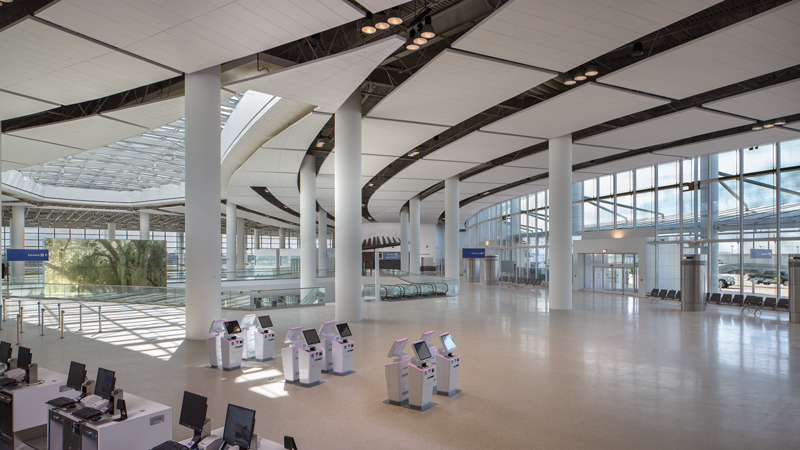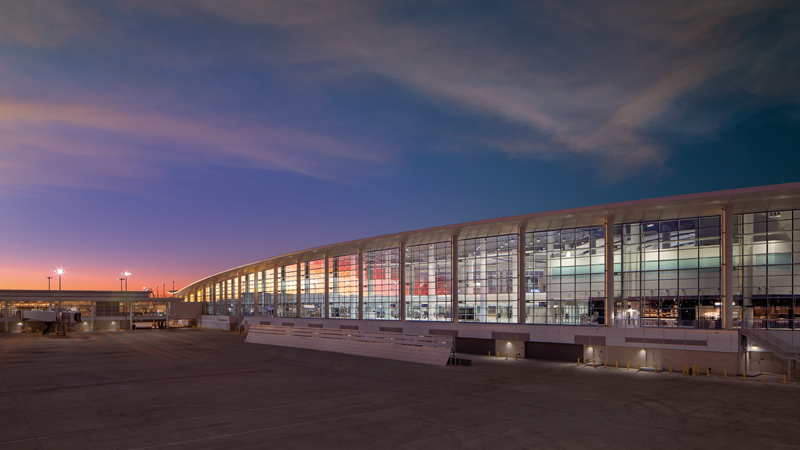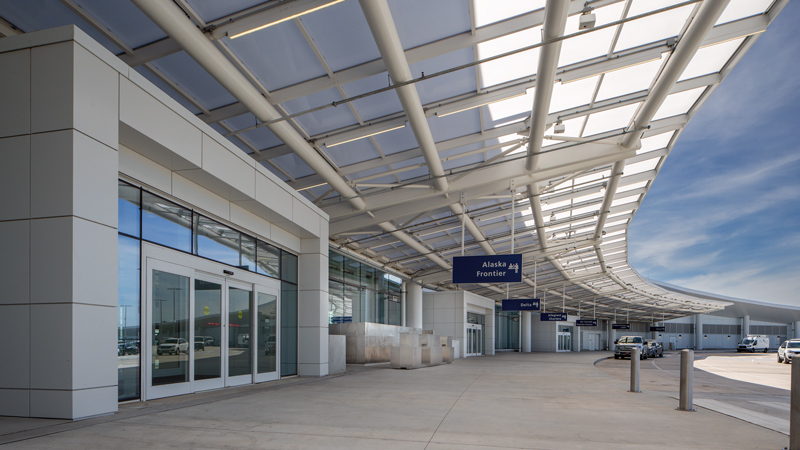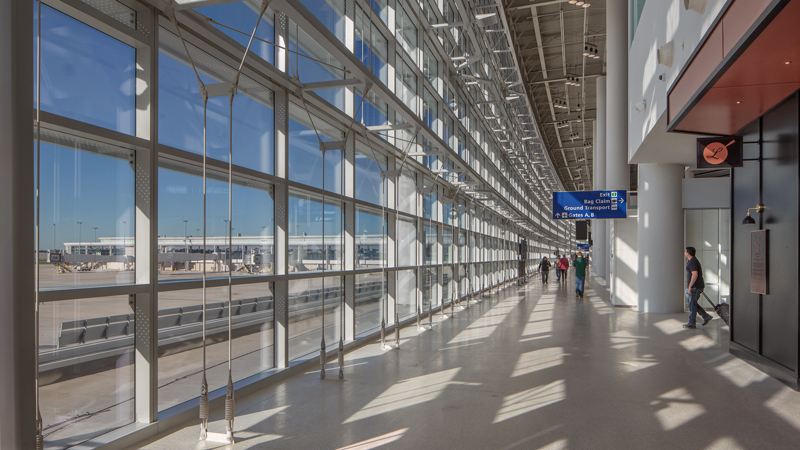Recent Articles
Lori McGilberry Joins LEO A DALY
Lori McGilberry, CHID, EDAC, NCIDQ, RID, joins LEO A DALY to lead and help deliver future-flexible environments that inspire wellness, health and hospitality throughout the dynamic delivery of care.
AIA Florida Honors 360 Rosemary with Statewide Award
360 Rosemary, a 20-story mixed-use project in West Palm Beach, has earned the prestigious Merit Award of Excellence for New Work from AIA Florida. Designed by LEO A DALY and Elkus Manfredi Architects, this LEED Gold-certified tower features stunning office spaces, retail areas, and urban community spaces, contributing to revitalizing the downtown area.
LEO A DALY Expertise Featured in July’s American School and University
The July issue of American Schools and Universities features an article from LEO A DALY’s Irena Savakova and Anya Grant, sharing the design successes for the University of Maryland’s Thurgood Marshall Hall.
LEO A DALY-Designed Bismarck-Burleigh Public Health Building Wins AIA Minneapolis Merit Award
The Bismarck-Burleigh Public Health Building, designed by LEO A DALY, has been honored with an AIA Minneapolis Merit Award.
20 Mass Earns Rethinking the Future Award, an International Honor
An international jury has honored the LEO A DALY-designed 20 Mass project with a Rethinking the Future Award, which recognizes excellence in global architecture.
New Orleans International Airport opens world-class new terminal
The 35-gate, $1 billion terminal will accommodate explosive growth for MSY, now the fifth fastest growing airport in the United States

Under construction since 2016, the 972,000 square-foot terminal has been called the city’s most transformative project since the Superdome (1971) and is the biggest U.S. airport terminal project in more than a decade. It completely replaces the existing terminal, which was built in 1959.
Design for the terminal was developed and completed by the Crescent City Aviation Team (CCAT), a joint venture of Atkins and LEO A DALY. CCAT led the design of the airport terminal, its three concourses, concession program, two parking garages, misc. aviation radar and electrical facilities, pump station, airside aprons and landside roadway systems. The terminal design was based on an initial concept by Pelli Clarke Pelli Architects.

“The new MSY establishes an iconic new gateway to the city of New Orleans and a passenger experience unlike anything else in the world. We’re truly thrilled to see it contribute to New Orleans’ growth as a national and international destination,” said Steven Lichtenberger, AIA, president of LEO A DALY.
The terminal immerses MSY visitors in the culture, geography, and history of the Big Easy. Its architectural form evokes the soft curves of the Mississippi River. Dappled natural light streams into the terminal via skylights meant to evoke the city’s tree-shaded urban markets. A jazz garden at the terminal’s three-story central atrium will feature live jazz music, while a massive glass-sealed image taken by a local photographer of live oak trees in morning fog graces the terminal’s main elevator.
The CCAT developed design standards for MSY’s unique concession program, which celebrates the city’s rich culinary, music, and arts heritage. Passengers will enjoy cuisine from local staples such as Leah’s Kitchen, Cure, Emeril’s and Folse Market within convenient view of their gates.

The design team worked to maximize convenience for passengers in the terminal. A single security checkpoint serves both foreign and domestic flights and adapts to accommodate large tourist crowds during special events such as Jazz Fest and Mardi Gras. Swing gates provide flexibility as demand shifts between international and domestic flights. A state-of-the-art in-line baggage screening system provides greater efficiency to the airlines and TSA. The layered, open feeling of the architecture, with prominent views of the airfield, makes the airport a breeze to navigate.
The need for storm-resistance drove many technical innovations. A spherical roof shape allows long spans while accommodating heavy rainfall. Extensive wind-tunnel modeling and on-site testing was done in collaboration with engineering firm Walter P Moore to test the blast-resistant curtain walls ability to withstand hurricane-force winds. The site’s marshy soil required 5,000 piles to be driven 100 feet to a sandy bed.

The 35-gate terminal includes the 6-gate Concourse A, which was added 9 months into construction to accommodate increasing demand for domestic and international travel to the city. The CCAT responded nimbly thanks to a digital model and BIM execution plan that allowed design work to resume while construction continued in other areas.
“This was an unbelievably complex project to coordinate, involving around 50 specialty subconsultants working on dozens of digital models simultaneously in studios across the country. Today, all that complexity goes away, and all that remains is the delight passengers feel in this elegant, energetic space. It’s a moment we’ve been building toward for the last seven years,” said Tim Duffy, AIA, director of technical services for LEO A DALY.
CCAT was first selected in 2012 to offer design services for MSY’s long term development.
